 2013 Kia Optima III (facelift 2013) Dimensions, Size & Specs
2013 Kia Optima III (facelift 2013) Dimensions, Size & SpecsMeasurements of the 2013 Kia Optima III, engineered for optimal performance and comfort
| Dimensions | |
|---|---|
| Length: | 4845 mm190.7 in15.9 ft |
| Width: | 1830 mm72.0 in6.0 ft |
| Height: | 1455 mm57.3 in4.8 ft |
| Ground Clearance: | 130 mm5.1 in0.4 ft |
| Trunk Capacity: | 305-505 liter10.8-17.8 cu ft |
| Weight Specifications | |
| Curb Weight: | 1403-1587 kg3093-3499 lbs |
| Maximal permitted Weight: | 2000-2080 kg4409-4586 lbs |
| Tire Specifications | |
| Rims Sizes: | 16-inch rims:
|
| Tire Sizes: |
|
The Kia Optima III facelift, produced between 2013 and 2015, is a mid-sized sedan that offers a balanced combination of style, space, and practicality. Coming in as an updated version of the third-generation Optima, this model features a sleek design with overall dimensions measuring 4845 mm in length (190.7 inches), 1830 mm in width (72 inches), and 1455 mm in height (57.3 inches). These proportions provide a spacious interior cabin that comfortably accommodates passengers while maintaining a modern and aerodynamic silhouette.
Weighing between 1403 and 1587 kg (3094 to 3500 lbs) depending on the specific trim and equipment, the Kia Optima III facelift remains nimble yet stable on the road. The maximum allowed vehicle weight ranges from 2000 to 2050 kg (4409 to 4519 lbs), reflecting its robust build quality and capability to handle additional cargo or passenger load.
One key aspect for practical family or daily use is the luggage capacity, which varies from 381 liters (13.4 cubic feet) up to 505 liters (17.8 cubic feet) depending on the rear seat configuration. This makes it a versatile option for those needing adequate cargo space for travel or errands.
The Optima III facelift rides on a variety of rim sizes, from 16-inch rims in 6.5J widths to larger 18-inch rims sized at 7.5J, paired with tire sizes ranging from 205/60 R16 to sporty 225/45 R18. This range gives buyers flexibility in balancing comfort, performance, and aesthetics.
Overall, the Kia Optima III facelift 2013-2015 combines mid-size sedan practicality with refined styling and adaptable features, making it a popular choice for drivers seeking reliability, space, and moderate luxury within a competitive segment.
Discover the standout features that make the 2013 Kia Optima III a leader in its class
Have a question? Please check our knowledgebase first.
The Kia Optima III facelift, produced between 2013 and 2015, has a length of 4845 mm (190.7 inches), making it a midsize sedan suitable for both city and highway driving. The width is 1830 mm (72.0 inches), providing a spacious cabin while maintaining good maneuverability. Its height stands at 1455 mm (57.3 inches), giving the vehicle a sleek, modern profile. These dimensions contribute to the Optima's comfortable interior space and road presence, combining aerodynamic efficiency with practicality for everyday use.
The Kia Optima III facelift has a curb weight ranging from 1403 kg to 1587 kg (3095 to 3500 lbs), depending on equipment level and trim. This moderate weight for a midsize sedan balances fuel efficiency with sturdiness and driving dynamics. The curb weight affects acceleration, handling, and braking—the lighter variants tend to be more agile and fuel-efficient, while heavier trims might offer more features and enhanced safety equipment. This weight range aligns well with competitors in the segment, ensuring the Optima remains competitive in performance and comfort.
The luggage capacity of the Kia Optima III facelift ranges from 381 liters to 505 liters (approximately 13.4 to 17.8 cubic feet), depending on the rear seat configuration and model options. This capacity offers ample space for typical daily usage like groceries, luggage for trips, or sports equipment. The flexibility of the rear seating folding options further enhances cargo space, making it versatile for both passenger and cargo needs. This volume matches well within the midsize sedan segment, providing practical utility without compromising passenger comfort.
Yes, the Kia Optima III facelift fits comfortably in a standard residential garage. With a length of 4845 mm (190.7 inches) and width of 1830 mm (72.0 inches), this sedan is sized suitably for typical garage dimensions, which often range around 6 meters (20 feet) deep and 3 meters (10 feet) wide. Its relatively moderate height of 1455 mm (57.3 inches) ensures ample overhead clearance. Therefore, most homeowners will find it easy to park the Optima III facelift inside a standard single or double garage without any clearance issues.
With a width of 1830 mm (72.0 inches), the Kia Optima III facelift offers a roomy cabin that comfortably accommodates five passengers with good shoulder room. This width strikes a balance between spacious interior dimensions and exterior manageability. While wider than compact cars, the Optima’s width remains practical for urban environments, allowing easy maneuverability and parking in standard spaces. The enhanced width also improves driving stability and road grip, contributing positively to vehicle handling and passenger comfort.
The Kia Optima III facelift comes with a range of tire and rim sizes: rims vary from 6.5J x 16 inches, 6.5J x 17 inches, and 7.5J x 18 inches, while tire options include 205/60 R16, 205/65 R16, 215/55 R17, and 225/45 R18. Smaller rims with taller tires generally enhance ride comfort and absorb road imperfections better, while larger rims with lower-profile tires improve steering response and handling precision. These options allow buyers to select configurations tailored to their preference for comfort or sportiness.
Compared to the previous generation Optima II, the Optima III facelift (2013–2015) is a bit longer and wider, enhancing interior space and road presence. While exact predecessor dimensions varied slightly, the Optima III's length of 4845 mm (190.7 inches) and width of 1830 mm (72.0 inches) generally exceed the Optima II, which measured closer to 4790 mm (188.6 inches) length and around 1820 mm (71.6 inches) width. This dimensional growth translates into improved passenger comfort and cargo capacity, making the newer model more competitive in the midsize sedan segment.
The Kia Optima III facelift competes well among midsize sedans like the Toyota Camry, Honda Accord, and Hyundai Sonata in terms of size and weight. With length at 4845 mm (190.7 inches) and width of 1830 mm (72.0 inches), it aligns closely with segment standards, offering competitive interior space and road presence. Its curb weight range of 1403–1587 kg (3095–3500 lbs) is within the typical range, balancing fuel efficiency and performance. The Optima's luggage capacity, also on par with rivals, ensures practicality. Overall, it offers a compelling package in both physical size and weight that suits a variety of driving needs.
The maximum weight capacity (gross vehicle weight rating) of the Kia Optima III facelift ranges from 2000 kg to 2050 kg (approximately 4409 to 4519 lbs), depending on trim and equipment. This figure represents the total allowable weight including passengers, cargo, and the vehicle itself. The difference between curb weight and max weight indicates the load carrying capability, which in the Optima's case typically allows for around 400 to 650 kg (880 to 1433 lbs) of combined passenger and cargo load. This capacity is sufficient for typical family use, including luggage, additional passengers, and accessories.
Measuring 1455 mm (57.3 inches) in height, the Kia Optima III facelift strikes a balance between a low, aerodynamic profile and sufficient interior headroom. This lower stance helps reduce drag, improving fuel efficiency and high-speed stability, while also giving the vehicle a sleek and sporty look. Despite its relatively low height, the Optima provides comfortable headroom for average-sized adults in both front and rear seats, thanks to smart interior packaging. This dimension contributes to a harmonious blend of style, performance, and passenger comfort.
Discover similar sized cars.
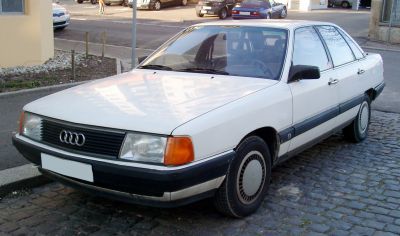
| Production: | 1982-1987 |
|---|---|
| Model Year: | 1982 |
| Length: | 4793 mm188.7 in |
| Width: | 1814 mm71.4 in |
| Height: | 1422 mm56.0 in |
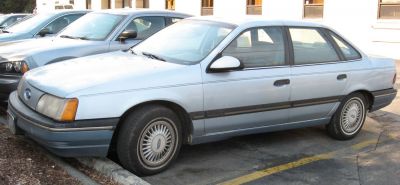
| Production: | 1986-1991 |
|---|---|
| Model Year: | 1986 |
| Length: | 4785 mm188.4 in |
| Width: | 1796 mm70.7 in |
| Height: | 1379-1387 mm54.3-54.6 in |
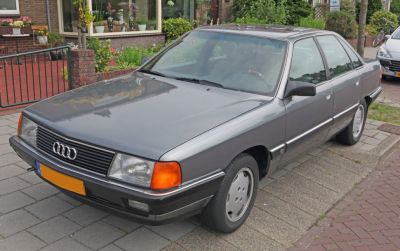
| Production: | 1988-1990 |
|---|---|
| Model Year: | 1988 |
| Length: | 4793 mm188.7 in |
| Width: | 1814 mm71.4 in |
| Height: | 1421 mm55.9 in |

| Production: | 1998-2003 |
|---|---|
| Model Year: | 1997 |
| Length: | 4775 mm188.0 in |
| Width: | 1800 mm70.9 in |
| Height: | 1415 mm55.7 in |
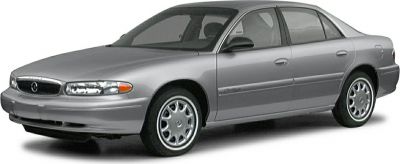
| Production: | 1997-2005 |
|---|---|
| Model Year: | 1997 |
| Length: | 4790-4940 mm188.6-194.5 in |
| Width: | 1850 mm72.8 in |
| Height: | 1440 mm56.7 in |
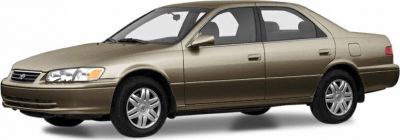
| Production: | 2000-2001 |
|---|---|
| Model Year: | 2000 |
| Length: | 4788 mm188.5 in |
| Width: | 1780 mm70.1 in |
| Height: | 1407 mm55.4 in |

| Production: | 1999-2003 |
|---|---|
| Model Year: | 2000 |
| Length: | 4775 mm188.0 in |
| Width: | 1800 mm70.9 in |
| Height: | 1415 mm55.7 in |

| Production: | 1999-2005 |
|---|---|
| Model Year: | 2000 |
| Length: | 4833 mm190.3 in |
| Width: | 1850 mm72.8 in |
| Height: | 1443 mm56.8 in |
